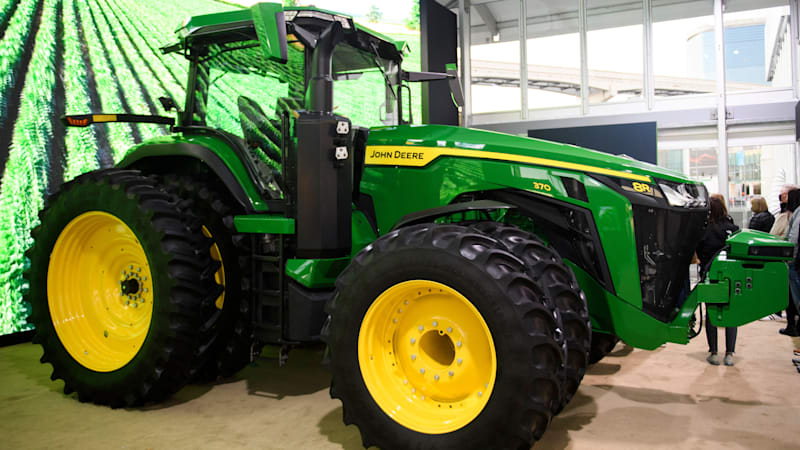DES MOINES, Iowa — For years, Americans were told that autonomous technology was improving and driverless cars were just around the corner.
They’re finally here, but to get a glimpse of them, you’ll need to head to a farm instead of looking along the city streets.
Starting this fall, green 14-ton tractors that can plow day and night without anyone sitting in the cab or even looking near will come off the John Deere factory assembly line in Waterloo, Iowa, commemorating the era of autonomous farming.
The development follows an effort of more than a decade by the world’s largest farm equipment manufacturer and marks a milestone for automation advocates, who have been explaining for years why driverless cars aren’t quite ready for prime time.
“I’m happy to see them come out and push the other technologies,” said Raj Rajkumar, a professor at Carnegie Mellon University and an expert on self-driving cars.
Deere is not yet saying how much the autonomous tractors will cost, but the new technology will be added to tractors that sell for about $500,000, said Ben Haber, a company spokesperson. The company plans to use the autonomous tractors on 10 to 50 farms by this fall, before the numbers increase significantly in the following years.
Over the past decade, the so-called imminent debut of autonomous vehicles on city streets and highways has been repeatedly delayed as companies struggled to ensure their safety.
But, notes Rajkumar, tractors have it easier because they don’t have to deal with other vehicles, pedestrians or the complexities of an urban environment. Tractors can use consistent GPS data, unlike cars that can lose contact when driving through tunnels or tall buildings.
Or as Joel Dawson, a Deere production director, put it, “You won’t see a crosswalk in most cornfields in Iowa or Nebraska.”
Modern tractors already have GPS guides that control steering and turning to ensure optimal tilling, seeding and harvesting. They also use real-time data streams to make changes as needed due to soil conditions, amount of fertilizer applied, or other factors.
With the autonomous tractor, farmers can now hook up an implement behind a tractor, start the machine with a swipe of a smartphone, and then let it sway across a field on its own.
The self-propelled tractors are equipped with six pairs of cameras that act like human eyes and can provide a 360-degree view. When filtered by computer algorithms, the tractor can determine where it is in the field and will stop abruptly if something unfamiliar is in its path.
Farmers often grow crops on several plots that are miles apart, so while the tractor toils in one field, a farmer can work in another, drive into town for supplies or spend time with their families at home. Since less than 2% of Americans work on farms and the rural population has declined for decades, the autonomous tractors are expected to help with chronic labor shortages as well.
The shift to increasingly sophisticated tractors is part of a movement that emphasizes planting, fertilizing and harvesting during short periods of time when conditions are perfect. If new technology can help farmers get a job done when soil and air temperatures are, say, just before the approaching wet weather, it could mean more bountiful crops months later.
“If I can’t work this field today and it rains tonight, that could mean we can’t plant the field for another week and that will affect real costs in many operations,” said Ryan Berman, who addresses agricultural technology issues at Iowa. state university. “If you can move an additional 80 or 100 acres into that optimal window, that could be worth thousands of dollars each year, probably tens of thousands.
Still, the tractor won’t be for everyone.
Ed Anderson, research director for the Iowa Soybean Association, cited the significant cost and noted that some farmers would rather work hands-on than monitor operations via a smartphone.
Another industrial giant, CNH Industrial, is also developing autonomous capabilities for its Case and New Holland tractors, and other companies are exploring the use of numerous smaller autonomous machines to perform other agricultural work.
Related video:
